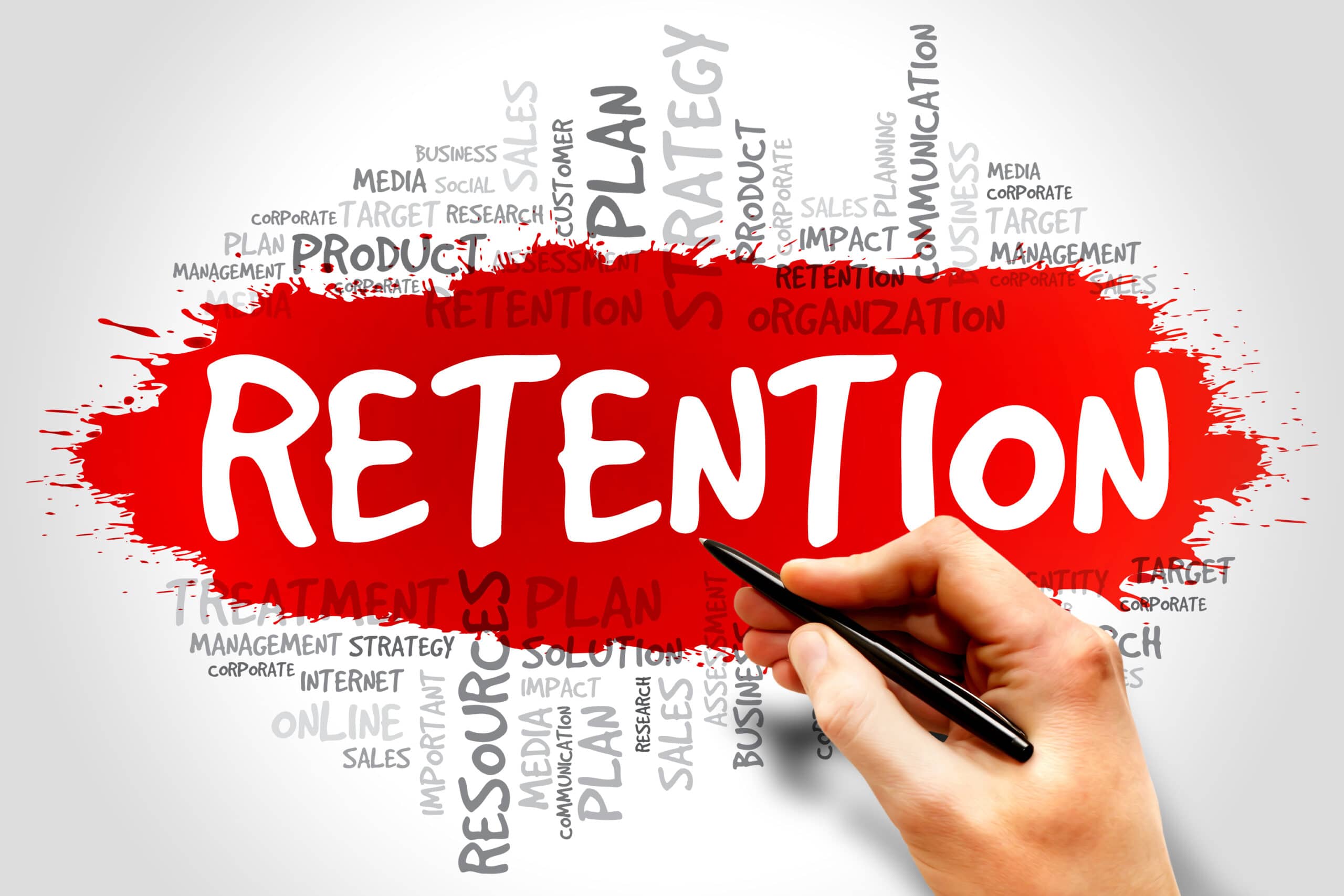All loyalty programs help improve customer lifetime value (CLTV), but CLTV is not dependent on loyalty programs alone. According to the Customer Loyalty Index 2021, “67% of customers consider themselves loyal to a brand, whether they’re part of a loyalty program or not.”
Loyalty programs are just one of many methods brands use to foster long-term relationships with customers. Even though such programs are effective and powerful, modern marketers must take a more holistic approach to engage customers and build long-term relationships. These days, 19% of consumers say they’re now less picky about which brands they buy in the wake of the pandemic.
No business wants to say farewell to a fifth of their loyal customers without a fight! Apart from loyalty programs (or in addition to them), leading brands are using various strategies to give customers good reasons to stay loyal. These 10 real-life examples will inspire you with ideas for creating long-lasting, personal connections with your customers.
In this list, you’ll notice three major themes, each one essential to any loyalty play:
- Customer lifecycle: A relationship isn’t based on any single interaction (or in the case of commerce, any single transaction). Understanding the entire customer lifecycle is critical to “define what a loyal customer looks like for your brand,” according to the playbook Retail 一 Driving Customer Loyalty in a Digital Era.
- Relevant content: Personalization matters! Being able to share the right message with the right person has a direct impact on how your customer relates to your brand.
- Automation and AI: Automation and artificial intelligence are the keys to personalization at scale, because no marketer is going to customize 10,000+ emails by hand. (Who has time for that?!)
Contents:
- ECO. Modern Essentials: Mapping the Customer Journey
- Nike Hong Kong: Improving Audience Segmentation and Automation
- Easyparapharmacie: Getting a 360-Degree View of the Customer
- Char-Broil: Making Content the King of a Long Customer Lifecycle
- adidas Runtastic: Getting Fit with Personalized Content That Fits the Moment
- Marine Deals: May We Recommend the Fish?
- City Beach: Winning Customers Back with AI
- BrandAlley: Using AI and First-Party Data
- Outnorth: Engaging Customers with AI
- Total Tools: Rescuing Abandoned Carts
- Final Thoughts: Loyalty Is an Exchange of Benefits
#1. ECO. Modern Essentials: Mapping the Customer Journey
ECO. Modern Essentials is an Australia-based e-commerce brand for pure essential oils and sustainable living. The brand really began to take off in 2017, but their rapid growth started to have a negative impact on the customer journey. According to Natalie Peat, Finance and E-Commerce Manager, they took a closer look at the customer experience and found that it was disjointed, with “really fragmented messaging, inconsistent offers, and a failing tech stack that wasn’t keeping up, and ultimately, it wasn’t a good customer experience.”
The solution? The ECO. team went back to basics and focused on mapping their customer journey.
“We needed to get to a place where we were being true to our values and delighting our customers. So we sat down and looked at four key areas where we could really make a difference. We needed to prioritize the customer experience and interaction with our brand and especially prioritizing [sic] that over the intermediate sales from the customer. We needed to understand customer behavior and the lifecycle stages they were in. We needed to utilize data to drive decisions and priorities instead of going off gut feeling. And we needed to migrate to a platform that would automate this for us. And so how we did it… […] so I’ll break these all out and the next slides. But as a recap, we sat down and we studied that customer journey. We learned everything there was to learn about our customer journey, how they were experiencing every touchpoint. We streamlined our brand messaging and personality. We used an automated platform to execute everything we needed along the customer journey, and then we needed to deliver on that promise to prioritize the customer along this journey as well.”
After going through the discovery process, ECO. partnered up with Emarsys and restructured their customer flows and automations to be more targeted and personalized. One particular email received a personalization makeover that resulted in 10x the opens! ECO. successfully increased active customer revenue by 276% YoY.
Watch the full interview with ECO. on-demand.
#2. Nike Hong Kong: Improving Audience Segmentation and Automation
In the process of understanding your customers and their journey with your brand, you’re inevitably going to discover that you have different customers with different needs.
That’s where segmentation comes into play.
Even a huge, recognizable brand like Nike must occasionally take steps to re-evaluate its audience and marketing strategies. The Nike Hong Kong team wanted to be able to stay on top of local market trends and connect with their huge contact list on a 1:1 basis. To do that, though, the team needed to put their customer lifecycle under the microscope 一 which was something they’d never done previously.
The Smart Insight tool for powerful analytics gave the Nike HK team the insights they needed to launch their very first customer lifecycle campaigns, which resulted in a 32.5% increase in website visits and 110% increase in automation revenue.
According to Jade Lau, Digital Commerce Senior Manager, “We are particularly proud that we could utilize our database and run campaigns on local sports moments, for example, the Hong Kong Marathon. This contributed a significant portion of revenue.”
#3. Easyparapharmacie: Getting a 360-Degree View of the Customer
Like Nike HK, Easyparapharmacie wanted to optimize their segmentation and automation. They already had a loyalty program running and were collecting customer lifecycle data, but the data was siloed. The silos were causing major tech headaches and requiring extra resources to execute any strategies.
The Easyparapharmacie marketing team wanted to improve not only their loyalty program but every stage of the customer lifecycle. After implementing the Emarsys platform to integrate all channels and create a single stream of data, the team was able to better personalize the customer experience across the customer lifecycle, from initial welcome to retention.
One of their numerous goals for this implementation was to reduce customer churn. Even if a business has a loyalty program in place, as Easyparapharmacie does, the brand needs to prevent churn for the entire audience, not just those in the loyalty program. And the strategy paid off: Easyparapharmacie’s win-back efforts resulted in 55% of defecting customers becoming active!
#4. Char-Broil: Making Content the King of a Long Customer Lifecycle
One of the biggest pieces of the customer loyalty puzzle is content. And we’re not talking about just any old content, but quality content that speaks to an individual customer’s interests.
As the industry leader for charcoal grills, Char-Broil knows very well the impact that content can have on customer loyalty. When customers buy a grill, they’re making a single, high-value purchase that will last them at least five years. To foster brand loyalty across such a long period of time, the Char-Broil marketing team makes content the centerpiece of their marketing strategy.
“For us, content is king, especially getting people to… Really engaging people to just explore more, try new ingredients, try new techniques, and not [in] a way that’s condescending, but in a way that opens up people to feel comfortable to try new things. We have been definitely increasing our segmentation to get a better look at our buyers versus our non-buyers, the people who are just really interested in our content that haven’t quite gotten to that purchase point yet. [We’re] seeing where people are falling off in that segmentation to say, all right, at 14 days, they’re dropping down into the lower open rate. Let’s see what we can do at that point to really re-engage them as well. So we’re definitely more in the content space. But as we increase our segmentation, as we look at personalization like that post-purchase series and [we] are understanding more about our consumer and that really, really long lifecycle, […] there’s a ton of opportunities there.”
Feeling fired up about content and the customer journey? You can watch the full interview with Char-Broil, on-demand.
#5. adidas Runtastic: Getting Fit with Personalized Content That Fits the Moment
For a business to claim that it has loyal customers, it has to get customers to show up (unsurprisingly, a critical aspect of loyalty). That’s true whether the business has a physical store or, like adidas Runtastic, a strictly digital presence.
adidas Runtastic, a mobile fitness brand, thrives in the digital world and strives to provide an excellent fitness experience for all of its users. That can be challenging when you have 200+ data points and a list of 90 million users who engage across multiple channels.
By using cross-channel automation to trigger 1:1 personalized experiences in real time, Runtastic changed the game. By delivering relevant content (such as a link for post-workout meal recommendations delivered via push notification after the user finishes a workout), the brand increased engagement by 90%.
You can read more about their story or watch an interview featuring Edit Dudás, Head of CRM for Runtastic.
#6. Marine Deals: May We Recommend the Fish?
So long and thanks for all the…wait, that’s been done before. Let me try again.
As a popular e-commerce retailer for boating and fishing gear in New Zealand, Marine Deals ran into a delightful problem: The business was growing, and so was its customer base. To support that growth, the team wanted to get a better handle on the customer lifecycle and how they could enhance it. They wanted to segment their top customers and provide them with personalized and targeted recommendations to more effectively retain their business.
And that’s exactly what they did. After implementing the Emarsys platform, Marine Deals used Smart Insight to analyze their customer base, identifying that 72% of their revenue came from a specific set of engaged leads and active customers. The marketing team launched campaign automation as well as personalized and predictive product recommendations. By engaging top customers with relevant, recommended products, the brand increased email conversion by 19%, retention by 24%, and win-backs by 9%.
#7. City Beach: Winning Customers Back with AI
Australia youth fashion retailer City Beach “wanted a single solution that could scale up with our business,” according to Mark Cheng, Head of Digital. The brand didn’t want just any solution, though. To engage their young, trendy audience and prevent them from churning, City Beach needed the extra boost that artificial intelligence could offer. Lara Donnelly explains the challenge and opportunity in this short clip:
“We have such a large database of people and a lot of different customers, and they have all different shopping behaviors. So by the time we sent that offer to that customer, to all those customers at that set time, it was basically too late for us, or it was a lot harder for us to win them back. So, if I defected at 90 days, and Kelly defects at 20 days, you know, […] we’re able to actually, I suppose, use the AI to identify which customers, on a more one-to-one level, are going to defect and then trigger the communications before they actually defect and not after the fact when it’s actually a lot harder to win them back.”
By using AI algorithms and machine learning to enhance their data, City Beach keeps a finger on the pulse of what customers are most likely to do 一 purchase, churn, or go silent. Then automations go to work, engaging those customers with targeted, personalized content and product recommendations.
After just 90 days of using AI, City Beach achieved a 48% lift in won-back customers.
You can keep riding this wave of success by checking out the full story, including the short video summary.
#8. BrandAlley: Using AI and First-Party Data
Just like a penny saved is a penny earned, a customer you prevent from churning is also revenue earned. (And, you’ll earn a lot more than a cent.)
BrandAlley had a problem and a goal 一 to win back churning customers. The marketing team had visibility into the customer lifecycle, and they decided to add AI to their campaigns and maximize their first-party data. Now they provide real-time communications to capture attention at the critical moment when a customer is in danger of straying.
“To be honest, we saw great results with every new adoption of technology, which was really, really exciting to see all the rewards. But what has been really rewarding to see since starting using AI is that we saw an increase by 10% in our average basket value on a particular set of customer lifecycles. But we also won back 24% of the customers that were likely to defect. So for us, the numbers were really incredible because for anyone that knows BrandAlley, they know how many emails we send to our base on a daily and weekly basis. So being able to alter the way we target this communication is to make sure that we don’t jeopardize the inbox placement, the IP addresses, and so on, but also continue to send really powerful communications was really the key to the success.”
For more on BrandAlley’s story and the various strategies they used, you can watch the full interview on-demand or catch the short video summary.
#9. Outnorth: Engaging Customers with AI
AI has many more uses than just preventing customer churn 一 it’s also great at keeping people engaged throughout the active period of their customer journey.
Outnorth, a Scandinavian retailer for outdoor clothing and gear, had been using generic send lists, sharing one-size-fits-all content for their campaigns. However, the marketing team wanted to create dynamic campaigns featuring content that would appeal to their equally dynamic audience.
After putting the right customer engagement platform in place, the team was able to create multi-step lifecycle campaigns with smart segmentation that would update automatically based on customer behaviors. The team automated 40 programs across customer lifecycle stages in 6 counties. They improved productivity while also improving the customer experience and boosting loyalty and increasing customer lifetime value.
Overall, they saw a 12% revenue lift from program participants. In particular, their birthday campaign programs saw a 270% uplift!
#10. Total Tools: Rescuing Abandoned Carts
Who doesn’t want to be a hero and save the day? Okay, so improving customer loyalty won’t turn you into Captain America or Captain Marvel, but Captain Marketing has a nice ring to it, too.
Total Tools had a loyalty program in place, but they had a separate loyalty problem to solve: Customers were loading items into their digital carts but then failing to complete the purchase. Sarah Neeson, Customer Engagement Specialist for Total Tools, was using an abandoned cart strategy already, but then she had an idea for how to improve it, as she describes in this clip:
“Another great tactic that’s had significant impact on redemption online and overall online conversion is a ten dollar online voucher code for customers who have abandoned their cart. When we originally implemented Emarsys, we set up basic abandoned cart automation that would email customers reminders a few hours after originally abandoning an item in their basket. A very common tactic used with retailers is incentivizing customers with a voucher, and this is something we were able to bring to life with the use of Emarsys and our data. So with our enhanced technology integrated, in addition to using the voucher pool feature in Emarsys, we were able to target those customers who had abandoned their cart and still hadn’t made a purchase.
“Now, with our customers, the majority make need-based purchases, so more than likely they need a tool for their next job in the next 24 to 48 hours. So with this in mind, we trialed reducing the time between when the customers first abandoned their cart and received the ABM. Plus we added in a few more ABMs throughout the purchase-based window based on the behavior on a product that the customer had shown interest in, with of course the final one being a ten dollar voucher code. We also overlaid this with CRM ads, so if the targeted customer didn’t open their email, the product was displayed to them on social. Now, with all of these optimizations made for the abandoned cart automation, we saw a 12% increase in conversion from those who received the ten dollar voucher.”
By increasing conversions in this way, Total Tools successfully builds trust and loyalty with customers. Buyers know that they can rely on the Total Tools brand to be proactive about helping them complete tasks.
The full interview, available on-demand, digs into more strategies for cross-channel marketing and personalization.
Final Thoughts: Loyalty Is an Exchange of Benefits
Loyalty is built on many things: trust, common interests, and mutual benefits.
The benefits that brands bring to the table include personalized experiences, relevant content, timely interactions, and a multitude of other conveniences.
In exchange for these benefits, customers show their loyalty by engaging with content, referring other customers, and spending their hard-earned dollars on your brand.
Brand loyalty isn’t just about a program with a point or reward system. It’s baked into every benefit you have to offer and every interaction between your brand and your customers.
Handpicked Related Content:

















